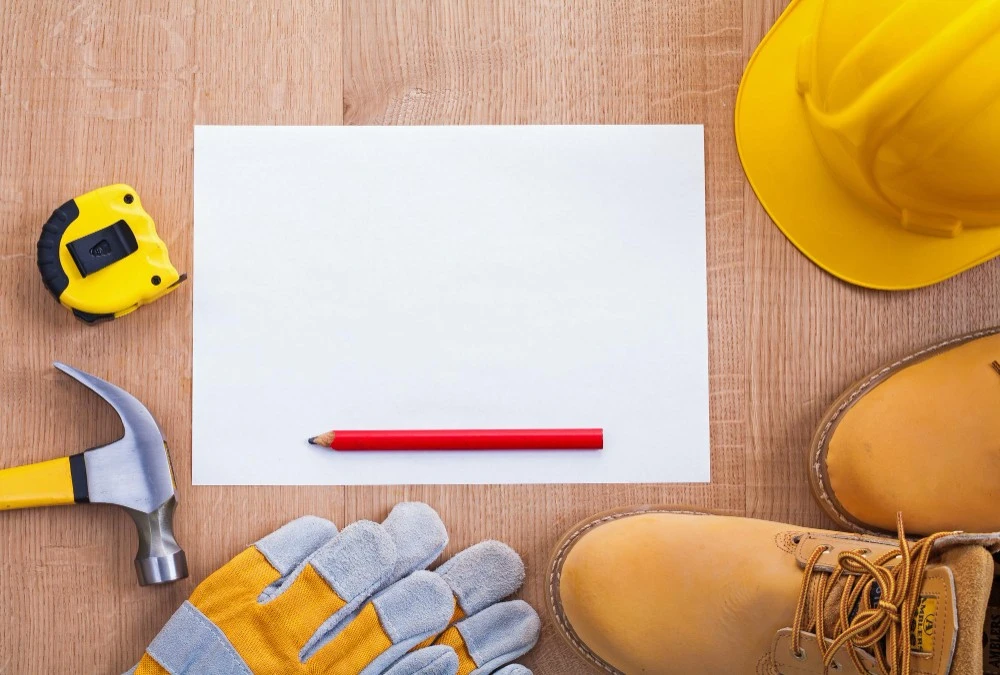Home renovation projects can breathe new life into your living space, enhancing both aesthetics and functionality. However, it’s crucial to remember that safety should always be a top priority when undertaking such endeavors. Whether you’re a seasoned DIY enthusiast or working with professional contractors, understanding and implementing proper safety measures is essential to protect yourself, your loved ones, and your property. In this guide, we will explore some fundamental home renovation safety tips and precautions to ensure that your project is not only successful but also injury-free.
Personal Protective Equipment (PPE)
Personal Protective Equipment (PPE) is crucial for ensuring the safety of individuals involved in home renovation projects. PPE includes items like safety goggles, ear protection, gloves, and helmets. Depending on the task, different types of PPE may be necessary. For example, when working with power tools or chemicals, safety goggles and gloves protect against eye injuries and skin contact with hazardous substances. Ear protection is essential when using loud equipment to prevent hearing damage. Wearing the appropriate PPE minimizes the risk of injuries and ensures that workers are adequately protected during the renovation process.

Hazard Identification and Mitigation
Before starting any renovation project, it’s vital to identify potential hazards in the work area. Hazards can include electrical wires, sharp objects, uneven surfaces, and more. Once identified, steps should be taken to mitigate these risks. This may involve clearing the work area of debris, marking out electrical wiring, or creating safe pathways for movement. Proper hazard identification and mitigation reduce the chances of accidents, injuries, and damage to property during home renovation. Regular inspections and updates to hazard assessments throughout the project help maintain a safe working environment.
Electrical Safety
Electrical safety is paramount during home renovation projects, as working with wiring and electrical systems can be hazardous. It’s crucial to turn off the power supply to the area where work is being done and use appropriate circuit testers to ensure circuits are de-energized. When working on electrical systems, individuals should be trained and follow electrical safety guidelines to prevent shocks, fires, or other accidents. Proper grounding and insulation of wires and cables are also essential to maintain electrical safety.
Tool and Equipment Safety
Using tools and equipment safely is essential to prevent accidents and injuries. It’s important to read and follow the manufacturer’s instructions for all tools and equipment. Regularly inspect tools for wear and damage, and replace or repair them as needed. Keep tools clean and well-maintained to ensure they function correctly. Additionally, always use the right tool for the job, and when not in use, store them properly to prevent tripping hazards and accidents.
Proper Ventilation and Respiratory Protection
Proper ventilation is crucial when working with materials that generate dust, fumes, or toxic gases, such as paints, adhesives, or asbestos-containing materials. Inadequate ventilation can lead to respiratory problems or exposure to harmful substances. Using respiratory protection, such as masks or respirators, is essential when working in poorly ventilated areas or around potentially harmful materials. Adequate ventilation and respiratory protection help maintain good air quality and protect the health of those involved in the renovation project.
Safe Handling of Hazardous Materials
Some home renovation projects may involve the removal or disposal of hazardous materials, such as lead-based paint, asbestos, or mold. It’s essential to follow safety protocols when handling and disposing of these materials. Use appropriate protective gear, such as gloves and masks, and follow local regulations for hazardous waste disposal. Professional assistance may be required for safe removal and disposal of certain hazardous materials to minimize health risks.

Fire Safety and Emergency Preparedness
Home renovation projects can pose fire hazards, especially when using power tools, welding equipment, or flammable materials. It’s important to have fire extinguishers readily available, know how to use them, and have an emergency evacuation plan in place. Additionally, make sure that smoke detectors are functioning correctly and have fire-resistant barriers in place if necessary. Being prepared for emergencies ensures a quick response to potential fire incidents and helps prevent injuries or property damage during a home renovation.
Conclusion
In conclusion, a well-executed home renovation can bring about a positive transformation in your living environment. Yet, it’s important to remember that safety should never be compromised during the process. By adhering to the safety tips discussed in this guide, you can significantly reduce the risk of accidents and injuries, ensuring that your project is completed successfully while prioritizing the well-being of everyone involved. Whether it’s donning the right personal protective equipment, identifying and mitigating potential hazards, or following electrical and tool safety protocols, these practices are essential for a secure and enjoyable renovation experience.
Frequently Asked Questions
Yes, wearing appropriate PPE is crucial for safeguarding yourself during home renovations. Depending on the task, PPE such as safety goggles, gloves, ear protection, and respiratory masks may be necessary to protect against various hazards.
When dealing with hazardous materials, it’s essential to seek professional guidance and follow safety protocols. This may include wearing specialized protective gear and ensuring proper disposal methods to minimize health risks.
To ensure fire safety, have fire extinguishers on hand, install functional smoke detectors, and develop an emergency evacuation plan. Additionally, take precautions when using power tools and working with flammable materials to reduce the risk of fire incidents.


